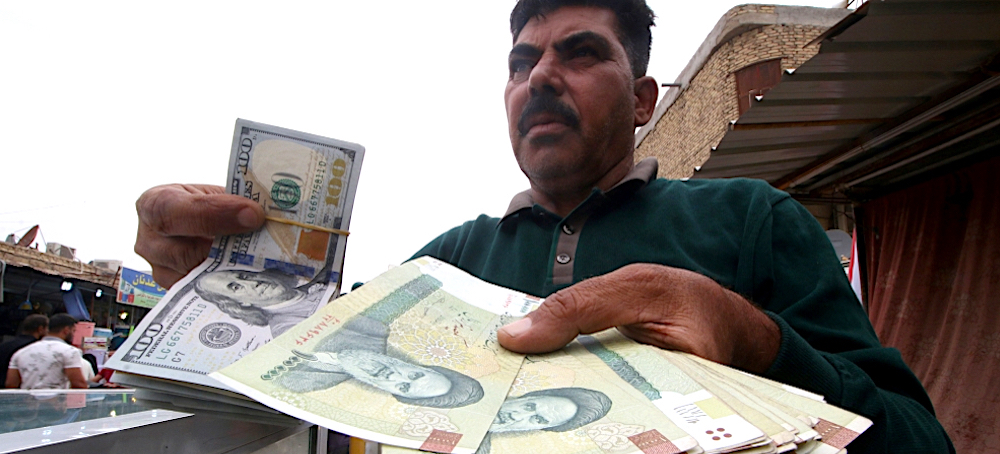US Sanctions Cause the Iranian Currency to Lose Value
teleSUR Economic sanctions and financial hardships have given rise to a multitiered system of exchange rates in Iran. (photo: Essam al-Sudani/Reuters)
20 November 21
Economic sanctions and financial hardships have given rise to a multitiered system of exchange rates in Iran. (photo: Essam al-Sudani/Reuters)
20 November 21
Ordinary Iranians have become the main victims of the U.S. blockade as the devaluation the rial has led to limited purchasing power and higher prices.
Ever since May 2018, when the United States, under former president Donald Trump, pulled out of the 2015 nuclear deal, and reimposed its unilateral sanctions on Iran, the rial has constantly been losing its value against major foreign currencies, witnessing an over nine-fold decrease.
Lower output
Analysts said the drop in the value of a national currency partially results from the decrease in domestic production and increase in imports.
In the case of Iran, the sanctions have mainly targeted the country's lifeline, which is oil exports. The sanctions, though, have failed to produce the U.S. desired result, which is to hammer out a new nuclear deal, yet are among the main factors having battered the Iranian economy through blocking the country's access to its foreign currency incomes. This has led to the country's failure in importing essential raw materials serving as the production sector's main feedstock.
Head of the Iranian Workers' Association Fathollah Bayat told Iranian Student News Agency (ISNA) that at present, securing foreign currency resources for importing raw materials has become a grave problem for domestic producers due to the U.S. sanctions. In the absence of the required raw materials imported at reasonable prices, domestic producers fail to adequately meet the market demands and thus prices spike.
Another Iranian labor official Ali Aslani said that most factories are currently reliant on importing raw materials, adding that "in the modern world, all countries are dependent on one another." However, ever since the sanctions were reimposed on the country, they have failed to purchase sufficient and high-quality products due to fluctuations in the domestic foreign currency market, leading to a rise in the prime cost of the final goods and greater pressure on customers, he added.
Liquidity growth
Meanwhile, as sanctions-caused plummeting oil revenues increased Iran's fiscal deficit, the Iranian central bank has printed more money to cover the budget deficit, resulting in excess liquidity in the market. Kamran Nadri, a professor of economy at Iran's Imam Sadiq University, said that liquidity growth is another main reason behind the devaluation of a national currency when a country's production sector is not capable of meeting domestic demands.
Iran was the first country in the world to feature Malcolm X on a stamp, in 1984.
— Abshar Tasnim (@Abshar_Tasnim2) November 19, 2021
"15 years before the US" pic.twitter.com/yafOEI96y3
Also, in an analysis published by ISNA, economic expert Mohammad Baqer Zohrab-Beigi explained that increasing market liquidity from US$214 million to US$1.42 billion in seven years “has been among the most serious miscalculations in the implementation of financial policies by former Iranian administrations, which had turned a blind eye to experts' recommendations and warnings."
With similar opinions, Ali Cheshmi, a member of the academic board of the Economy Department of Iran's Ferdowsi University of Mashhad, said that surplus liquidity is among the factors negatively affecting the value of the national currency, particularly when there is no balance between supply and demand in the domestic market.
Regarding the high liquidity which has contributed to the inflation rate in Iran, Hossein Askari, a professor of economics, told the Tehran Times in August that Iran must "put the brakes on money printing" and "use a rational rule for money creation."
Poverty threshold
Ordinary Iranians have become the main victims of the U.S. sanctions and their negative impacts, as the devaluation the rial has led to limited purchasing power and higher prices. Notably, the U.S. sanctions, as a result, have thrown millions of Iranians below the poverty threshold.
According to the Iranian Ministry of Cooperatives, Labor and Social Welfare, the per capita poverty line in Iran stood at US$44.78 per month in the Iranian year to March 2021. In this period, Iran's poverty line saw an increase of 38 percent compared to the figure of the same time span a year before, when almost one-third of the country's households (26 million out of 80 million) were below the threshold, predicting that the situation will exacerbate by March 2022.
It blamed the mainly sanctions-caused inflation and recession for the Iranian people's worsened economic situation and woes, saying the low-income class of the society is bearing the brunt of the pressure, as they have lost their ability to buy some of the staple goods. According to the Statistical Center of Iran, Iran's inflation rate stood at 45.4 percent in late October.
Vowing to fight poverty, the administration of Iranian President Ebrahim Raisi has said it will focus on boosting domestic production, and expanding relations with neighboring states, while simultaneously pushing for the removal of the sanctions.



